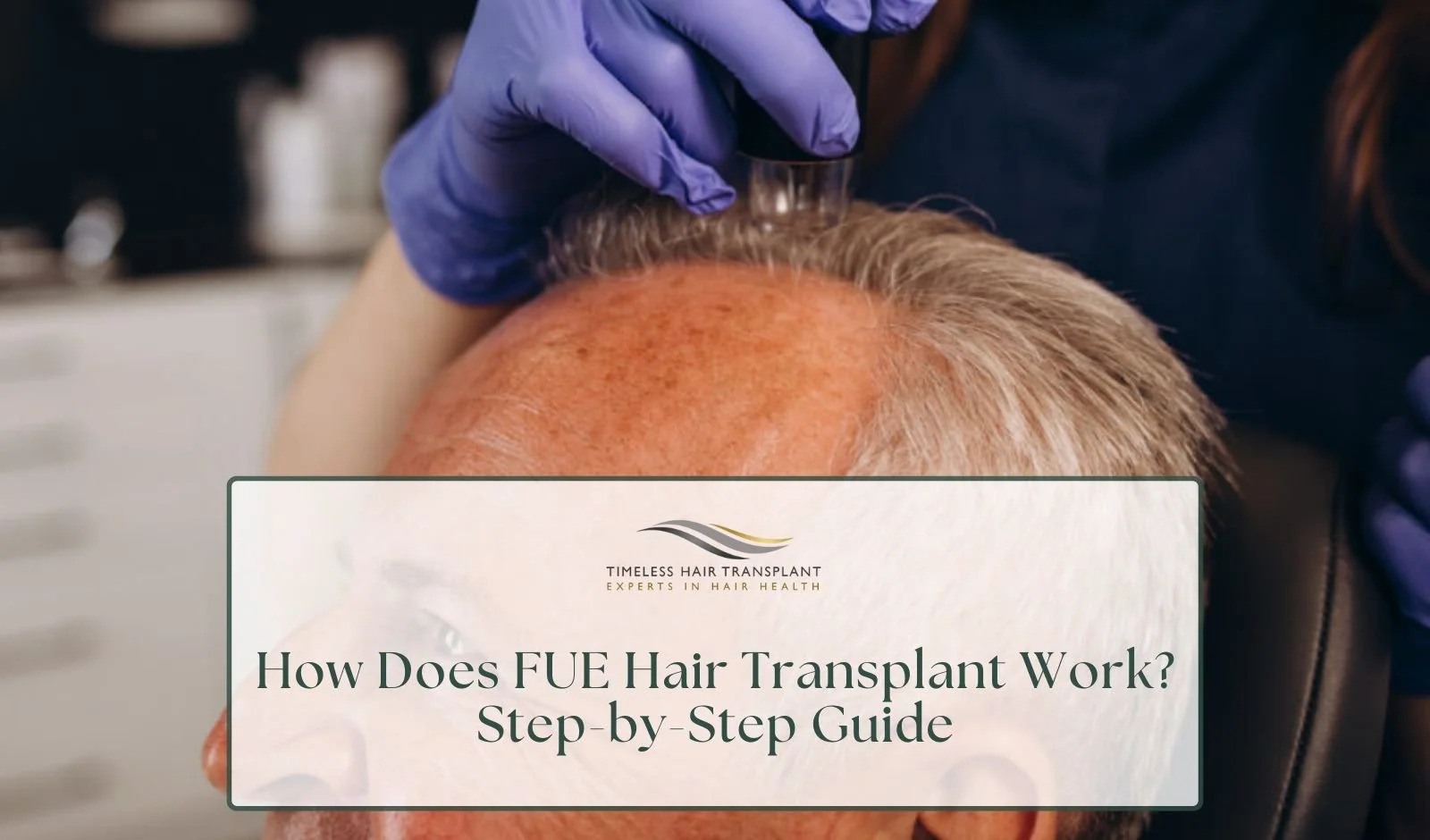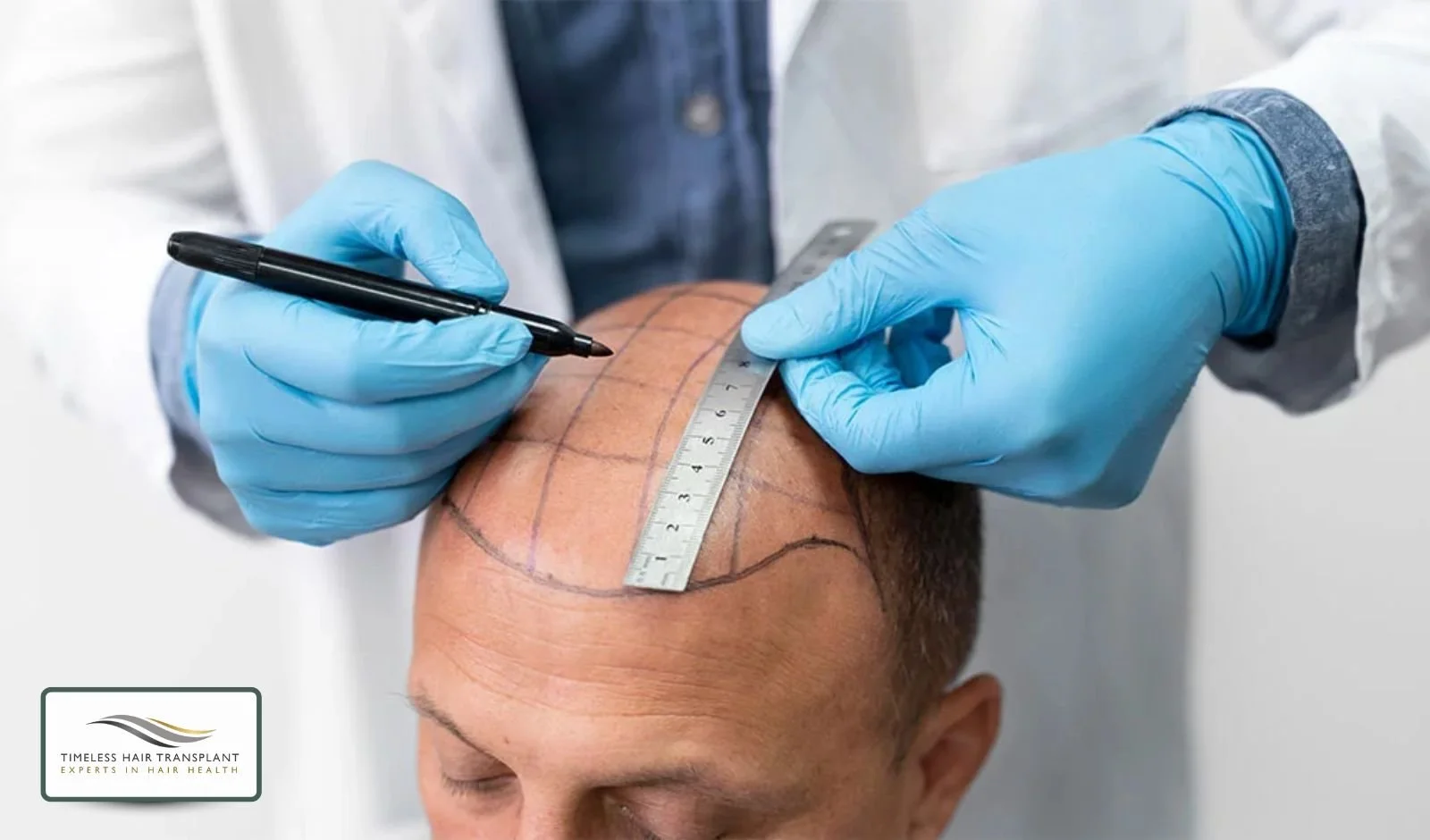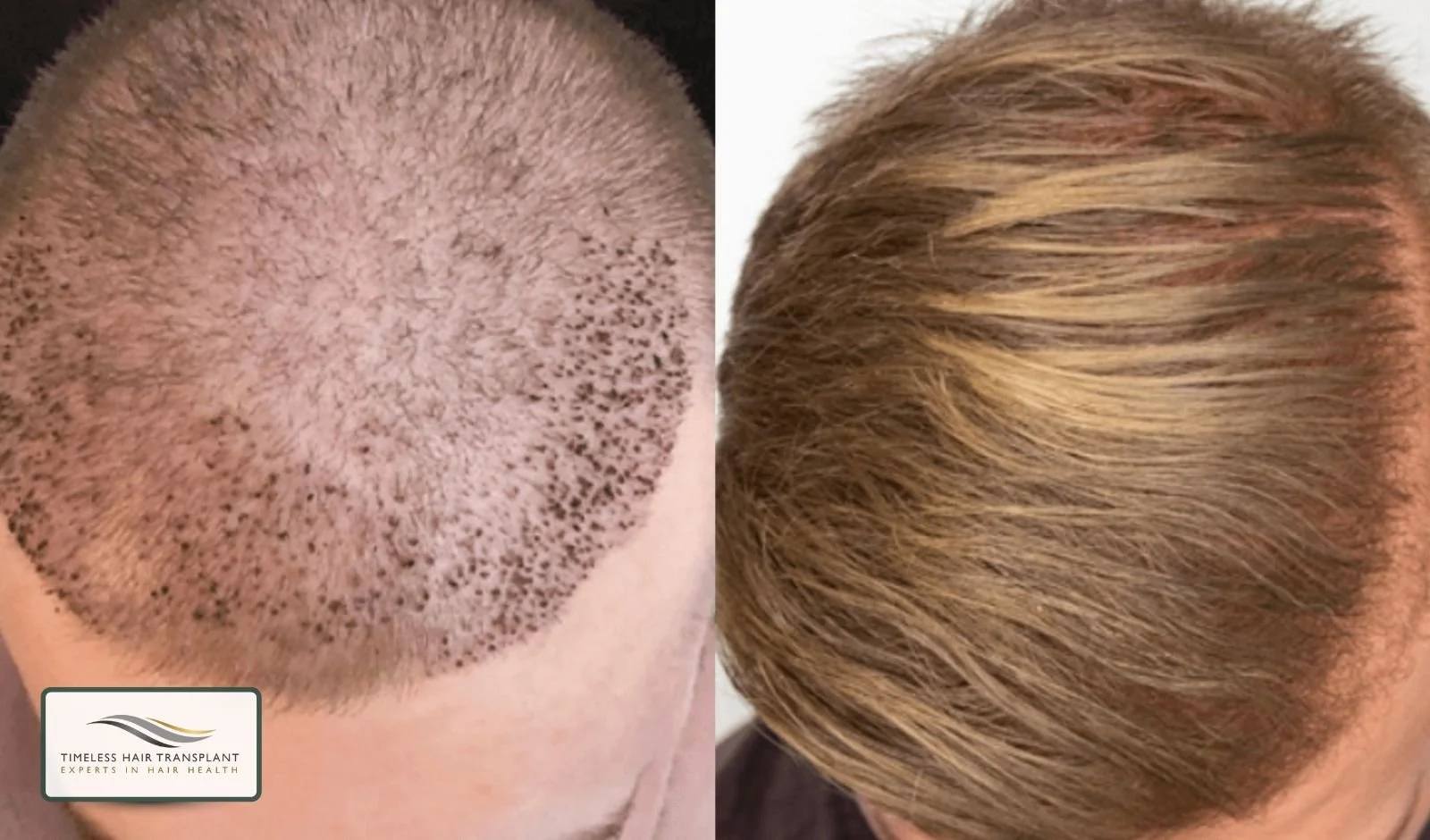How Does FUE Hair Transplant Work? Step-by-Step Guide
If you’re experiencing hair loss and exploring solutions, you may have come across the term FUE hair transplant. But how does this method actually work from start to finish, and what makes it different from other types of hair transplants such as FUT hair transplants? Most importantly, can it truly restore a natural hairline and help you regain confidence?
This guide explains the Follicular Unit Extraction (FUE) hair transplant procedure step by step, compares it with FUT, outlines the recovery process, and highlights possible side effects. Understanding how FUE hair transplant is done will give you realistic expectations and show you why so many patients worldwide choose this minimally invasive technique for lasting hair restoration.
What Is a FUE Hair Transplant?
FUE stands for Follicular Unit Extraction. It’s one of the most advanced and popular techniques in modern hair transplant surgery. In this method, individual follicular units, each containing 1-4 hair follicles, are extracted directly from the donor area (usually the back or sides of the scalp) and transplanted into the recipient area, which may be thinning or completely bald.
Unlike Follicular Unit Transplantation (FUT), which involves removing a strip of scalp and dissecting it into smaller hair grafts, FUE removes individual hair follicles using a tiny punch device, often less than 1mm in diameter. This means no large scar, faster recovery, and more flexibility with short hairstyles.
Why People Choose FUE Over FUT
Both FUE and FUT hair transplants have high success rates when performed by a skilled hair transplant surgeon. However, the main reasons many people opt for FUE include:
No linear scar - The small extraction points heal quickly and are nearly invisible.
Faster recovery - Most patients can return to light work within days.
Minimally invasive - Less discomfort during and after the procedure.
Natural results - The surgeon can place grafts with precision to match your natural growth pattern.
That said, FUT can be more cost-effective for patients who need a large number of grafts in a single session. The best choice depends on your hair loss pattern, donor hair availability, and personal preferences.
Step-by-Step: How the FUE Hair Transplant Procedure Works
Here’s what happens before, during, and after your FUE procedure.
Step 1: Consultation and Assessment
Every successful hair transplant work begins with a detailed consultation. Your surgeon will:
Examine your hair loss pattern
Assess your donor area for healthy hair follicles
Estimate how many hair grafts are needed
Discuss the expected hair transplant cost
Explain realistic hair growth timelines
This stage is crucial for creating a personalized surgical plan.
Step 2: Preparation
On the day of surgery:
Your scalp is cleaned and trimmed.
Local anaesthetic is applied to both donor and recipient areas.
You’ll be awake but comfortable throughout the process.
Step 3: Extraction of Individual Follicles
Using a micro-punch tool, the surgeon extracts individual hair follicles from the donor area. Each follicular unit is carefully removed to avoid damage. The extracted grafts are immediately preserved in a cooling solution to keep them healthy before implantation.
Step 4: Preparing the Recipient Area
Tiny incisions are made in the recipient area following your natural hairline and growth direction. The angle, depth, and spacing are planned meticulously to ensure your transplanted hair blends seamlessly with existing strands.
Step 5: Implantation of Grafts
The preserved hair grafts are inserted one by one into the prepared sites. The process is slow and precise to guarantee natural results and high survival rates for each follicle.
Step 6: Post Operation Care
After the hair transplant surgery, you’ll receive detailed instructions for the recovery phase, including:
How to clean your scalp
When you can wear a hat
Activities to avoid (like strenuous exercise or contact sports)
How to protect the donor area and prevent dislodging hair grafts
Recovery Timeline for an FUE Hair Transplant
Here’s what you can expect after your procedure:
Days 1-3: Mild swelling, redness, and tenderness in both donor and recipient areas. Avoid touching your scalp.
Week 1: Small scabs form around each graft and naturally fall off.
Weeks 2-3: Redness fades, and you may notice some shedding of transplanted hair; this is a normal part of the cycle.
3-4 Months: New hair growth begins.
6-12 Months: Significant improvements in density and coverage.
12+ Months: Full, final results of your hair restoration.
Potential Side Effects of FUE Hair Transplants
Like any surgical procedure, FUE comes with possible side effects. Most are temporary and resolve within days or weeks:
Mild swelling or redness
Temporary numbness in the donor or recipient area
Itching as the scalp heals
Minor crusting around graft sites
Severe complications are rare when the surgery is done by an experienced hair transplant surgeon.
Does FUE Really Work?
Yes. When performed by a qualified specialist, FUE has a high success rate, often above 90%. The key factors for a good hair transplant result include:
Quality of your donor hair
Skill and precision of the surgeon
Following post-op care instructions
Realistic expectations about density and coverage
Hair Transplant Cost: What to Expect
Hair transplant cost varies depending on:
Number of grafts needed
Clinic location and reputation
Surgeon’s experience
Whether you choose FUE or FUT
While FUE may cost more per graft than FUT, many patients find the faster recovery, lack of a linear scar, and flexibility with hairstyles worth the investment.
FUE vs. FUT: Which Is Right for You?
FUE is best suited for patients who:
Prefer a minimally invasive approach
Want to avoid visible scarring
Need fewer grafts or want to spread procedures over time
FUT may be better if you:
Require a large number of grafts in one session
Are less concerned about a linear scar
Want a more cost-effective option for extensive male pattern baldness
How to Maximize Your Hair Growth After FUE
Avoid strenuous exercise for the first few weeks
Keep your scalp clean and follow all aftercare instructions
Protect your head from sun exposure
Avoid scratching, rubbing, or picking at scabs
Stay hydrated and maintain a balanced diet to support healing
Why Choose Timeless Hair Transplant?
At Timeless Hair Transplant, we combine advanced techniques with personalised care to deliver natural, lasting results. Patients trust us because we focus on precision, safety, and long-term success in every procedure.
Here’s why people choose us:
✔ Skilled experts in both FUE and FUT
✔ State-of-the-art technology for comfort and accuracy
✔ Customised treatment plans tailored to individual needs
✔ Transparent pricing with no hidden fees
✔ Comprehensive aftercare to protect your results
An FUE hair transplant is one of the most effective solutions for hair loss, moving healthy follicles from the donor area to thinning spots for permanent, natural coverage. While results take time to fully develop, patients who follow their aftercare plan often enjoy thicker, healthier hair for decades.
Call +44 (0) 7516294471 today to book your free consultation and start your transformation.
Frequently Asked Questions
-
The surgeon extracts tiny groups of hairs (follicular units) from the donor area and implants them into thinning or balding spots. Each graft is placed with precision to ensure natural growth.
-
It depends on the number of grafts, but most sessions last between 4 and 8 hours.
-
Yes. FUE removes follicles one by one, leaving tiny dot scars, while FUT takes a strip of scalp that’s then divided into grafts. FUE is less invasive and usually has a quicker recovery.
-
Many patients return to office jobs within 2-5 days, while more physical jobs may require a bit longer.
-
You’ll start to see new hair growth around 3-4 months post-surgery, with fuller, permanent results appearing after 9-12 months.





